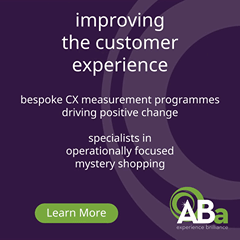Review (part one): The Retail Conference
The story of Thomas Cook’s rebuilding over the past 18 months as a digital business that is grappling with marketing across new media and channels, while also dealing with the after-effects of Covid-19, reflects much of what is happening across the retail sector.
Speaking at The Retail Conference 2022, organised by The Retail Bulletin Alan French, CEO of Thomas Cook, told delegates gathered in Central London about how the business has been brought back to life after its collapse in September 2019 when all its stores were closed, and its fleet of planes sold.
Building new business models
“We built a new business model, which involved looking at how to market the brand, the role of social media, and looking at the cost base. There was tremendous energy and excitement…we built a new business and new systems in less than a year and launched with a Covid-ready approach,” he recalls.
Despite taking this sensible route French admits there have still been many upheavals and that it is “still a very challenging environment”, within which he is working hard at bringing to life the product across the company’s app and digital channels, which includes short videos.
Claudiu Cioba, founder & CEO at VideoWise, very much believes such videos – in shoppable format – increase the levels of engagement and dwell time online, which typically leads to 21% uplifts in conversions. “We believe shoppers should stay on your site with videos rather than going onto YouTube. Many people go there to see unboxing and reviews but then you have lost them,” he says.
The need to gain the attention of shoppers immediately is essential, according to Robert Kulawik, COO of Everything5Pounds, otherwise they will simply be potentially lost to rivals. For this purpose he says user generated content is “massively important” especially as it can also convey that the retailer can be trusted to deliver on its promises.
Delivering on promises
Ian McBeth, head of digital, technology & data at Craft Gin Club, agrees: “All our efforts lead to delivering on the promise to customers. This is all about the retention piece, which is difficult. We’re using videos with an in-house mixologist, and we put these up on YouTube.”
Retention is vital to Craft Gin Club as it relies on the subscriber model that is all about discovery to the customer. “Retention is the key to ensure we get sufficient sales to become profitable,” he says, adding that the business tries to avoid the promotional activity undertaken by many with subscription models as this simply results in too many free boxes being given away.
For Jack Sweeney, director at JDS Strategists, there has been an increased focus on the online experience by the likes of the Craft Gin Club – including the use of videos – as a result of Covid-19 although he says the boost in sales enjoyed online during the pandemic has fallen back to more normal levels.
“The levels are where they would have been without Covid-19,” he says. Meanwhile, he points out that paid search is up as much as 400% in some cases. “You’ve got to be hedged. Being pure direct-to-consumer or pure e-commerce is risky,” suggests Sweeney.
Trading across channels
The upside to trading across channels has certainly been enjoyed by Emily Laws, head of brand at alcohol-free brewer Lucky Saint, who says: “Grocery stores is where people discover non-alcoholic beers while the on-trade [pubs] is where they get the best experience, and online customers are the best for sales because it involves bigger pack sizes. You need to know the journey of customers across the channels.”
Although Thomas Cook has ditched all its stores this is not a universal approach. Krisi Smith, co-founder & creative director at Bird & Blend Tea Co, remains committed to bricks and mortar despite the challenges. Although footfall is lower the capture rate is up, she says, adding that the current challenge is retention that was strong before the pandemic. “It underlines the uncertainty,” says Smith, but it has not deterred the company from opening more stores.
Before Covid-19 online sales represented a respectable 35% with the remainder generated by its seven physical stores whereas today sales are evenly split between online and the company’s 14 high street outlets. “We’ll continue to invest in both e-commerce and stores in order to keep the balance level. The increase in online sales from Covid-19 unlocked lots of doors but there has been no desire by us to stop opening stores,” says Smith.
Stores fuel the human connection
Part of this commitment to bricks and mortar is down to the belief in the need for human connections, especially as people are increasingly distracted by devices. “We’ll continue to open in places where people hang out and we can localise the stores,” she explains.
Vishal Talreja, property director at Itsu, is also planning on opening more outlets, which have taken on a different shape since Covid-19 when delivery became a vital aspect of the business during the various lockdowns.
“It accelerated delivery for us and we needed to rethink the space. With the rise of Uber and drivers walking into our restaurants we’ve needed to look at how we service them and eat-in customers. We’ve recently transformed a PizzaHut site to an Itsu with a separate part for delivery and brought screens in-store,” he says.
Although The Edit LDN is predominantly online – selling through a marketplace model – Moses Rashid, founder & CEO of The Edit LDN, says the company works with physical store operators to showcase products. “Our thing is to drop sneakers into stores in order to bring the product to life. We’re the most premium brand in our space and work with Harrods and Galleries Lafayette. We’re building a brand and community this way,” he says.
Overcoming supply chain challenges
As a marketplace dealing with limited run products Moses is well aware of maintaining a focus on the supply chain. For Ken Daly, CEO of JML Group, the supply chain has been the biggest challenge to his business especially since he sources many products from the Far East and the shipping costs had skyrocketed. “The good news is that over the last few months it has now normalised but with Sterling weaker against the Dollar this is another reason for inflation in the market,” he says.
Against this backdrop Daly says consumers are looking for goods that save them money, which is leading to lots of product areas doing well in a similar way that certain items enjoyed spikes in sales during Covid-19. Despite this focus on value Callum Campbell, CEO of Linnworks, says a primary driving force for consumers is still convenience, especially when they shop online.
“In a survey 76% of shoppers said convenience was the top priority, above price, when selecting a retailer. Price is where brands compete but this is a reduced point of differentiation and it is convenience that is now important,” he says, adding that the ease of returning unwanted products is an important part of the convenience dynamic.
Returns headache for retailers
By making returns easy it has put the onus of operational and cost issues onto the retailer. Andrew Gough, client director at ParcelLab, says this is leading to a growing number of retailers charging for returns. ParcelLab has found that 25% now charge versus 11% in 2021, with an average fee of £3.50. He regards the returns process as an opportunity for retailers to engage with shoppers and expects more of them to communicate via this route in the future.
What might help reduce these returns is the move by regular high street stores to become “shoppable fulfilment centres”, according to Kate Ancketill, founder & CEO of Creative Intelligence, who says they will differ from those stores that are pitching themselves as “temples of discovery”.
Within these fulfilment stores the stock levels will be limited and by scanning the QR code on an item it will be sent to the customer in the changing room to try on. Further sizes can then be sent down to them if required. The correctly sized item can then be dispatched to the home of the shopper.
Ancketill also highlights a survey by Gartner that suggests by 2026 as many as 25% of people will be spending an hour a day in the metaverse, and the likes of Zara among many other brands is creating ranges for wearing virtually – in the metaverse – and in the real world.
However, Gracia Amico, chair of Closer Pets, tempers this technology-led thinking by suggesting that in these tough times retailers need to focus their attention on surviving. “The simple most important thing is the customer. Not in the metaverse, but in the real world. Retailers need to make sure they deliver what people want and [in reality] humans have basic requirements,” she says.














